Review: 2011 Lexus IS 350 AWD
Time was Toyota thoroughly redesigned its cars every four years. Then every five. And lately not even that often. Consequently, for its sixth model year the second-generation Lexus IS received just a few tweaks. The most notable: at long last all-wheel-drive is available with an engine torquey enough to take advantage of its additional traction, namely the IS 350’s 306-horsepower, 277-foot-pounds direct-injected 3.5-liter V6.
Six years ago the chunky-yet-athletic shape of the Lexus IS was fresh and at least mildly interesting. The bodysides could be slimmer, but the cab-rearward proportions clearly communicate that this is a bona-fide rear-wheel-drive sedan. Look closely and you might notice the changes to the front fascia. The new-for-2011 17-inch-alloy wheels could appear sportier, but by the same measure they could also be stodgier. Larger, more-aggressively-styled wheels that better fill the fenders are available from the factory only with rear-wheel-drive, though one set of eighteens is available as a $1,756 dealer-installed accessory.
Gray-stained wood—essentially wood for those who don’t really care for the look of wood—is the most notable change to the interior. It’s classier than the “aluminized composite” trim employed in the ultra-high-performance IS-F. Otherwise the interior is much the same, so it’s cleanly styled and quietly attractive. In general the ergonomics are very good, with large buttons flanking the touchscreen display. But as in other Toyota and Lexus cars the low placement of the digital clock makes it hard to find at a glance. Also, the buttons for the stability control and the transmission mode are obscured by the steering wheel. These would be much handier on the center console. Materials, and especially the optional soft and aromatic semi-aniline leather trim, generally befit the car’s $47,130 price.
Even after six years the driving position in the Lexus IS remains unexpectedly gangsta, with a tall instrument panel, small windows, and a relatively distant, relatively upright windshield. Certainly not a Camaro, but in that direction. This contributes to the sporty character of the car, but detracts from livability for shorter adults in the front seat and kids in the back seat. An additional compromise with all-wheel-drive: the floorboard bulges up beneath the driver’s right calf.
The front sport buckets remain very good, coddling on the highway and gripping tightly in curves. But this time around they required some fiddling before I felt comfortable—the two-way-adjustable lumbar bulge hit too high. Your back—and thus your experience—will vary. The back seat remains the tightest in the segment—even adults of middling size barely fit. This is probably the main reason people reject the IS.
Ironically, given the manufacturer’s reputation, some of my most enlightening driving experiences have occurred in Toyota or Lexus cars. I first experienced a high-winding DOHC engine in the 1984 Toyota Corolla GT-S. Afterwards, anything with just two valves per cylinder seemed antiquated. My first drive in the IS 350 back in 2005 wasn’t as revelatory, but it nevertheless indicated that direct-injection was the way forward. Hit the gas and the engine’s response was immediate and strong.
Six years is essentially an eon in the car industry, and competitors have more-or-less caught up with their own 300-plus-horsepower sixes. Yet the 3.5 in the IS, though apparently unchanged, remains best-in-class. The Infiniti G37’s 328-horsepower 3.7-liter V6 might be more powerful, but the Lexus mill is far more refined. Every noise the latter engine makes is one you want to hear—Lexus clearly spent a lot of time finessing it. To the detriment of fuel economy, my ears thoroughly enjoyed frequent trips to the redline. Need a hint of when to shift, if you opt to do this yourself? A ring of LEDs in the tach glows orange as the needle sweeps past 5,000 then turns red when it reaches 6,500. At 6,700 you’ll hit the rev limiter, and in manual mode the transmission won’t shift on its own. The 5.0-liter V8 in the IS-F kicks out another 110 horsepower, but in my week with the IS 350 I never felt the need for them. The 3.5 quickly accelerates the sedan to imprudent speeds and arguably sounds better, with less heard from the exhaust and more from the bits whirring away under the hood. Lexus claims a much quicker 0-60 time for the 350 than for the 250, 5.7 vs. 8.3 seconds.
Fuel economy isn’t much better than with the IS-F, probably because most of what the V6’s lesser cylinder count giveth the AWD’s shorter final drive, mechanical drag, and 176 additional pounds (for a total of 3,703) taketh away. My driving generally confirmed the EPA ratings of 18 city and 25 highway (vs. 20/27 with RWD). Especially aggressive driving sent the average (as reported by the trip computer) into the mid-teens. Go very easy on the gas and you’ll observe low-twenties in the suburbs.
A manual transmission continues to only be offered with the 2.5. Though not quite as smooth or as quick to respond to the paddles as the eight-speed in the IS-F, the IS 350’s six-speed remains among the best conventional automatics. It operates smoothly and usually selects the appropriate cog for the situation all on its own. I mostly employed the paddles to force the engine to sing louder or to provoke untoward reactions from the chassis.
Even on snow-covered roads I generally failed at the latter. In rear-wheel-drive form, the IS handles more safely and predictably than the Infiniti G37. Add all-wheel-drive and even when provoked the chassis rarely does something it oughtn’t. Yet handling is more lively than with many all-wheel-drive cars. Power through a curve—possible without wheelspin thanks to the AWD—and the chassis’s initial understeer transitions to mild oversteer. The relatively soft rear suspension Toyota / Lexus tends to specify in rear-wheel-drive models contributes—the rear rolls more than the front, progressively overloading the outside rear tire. Also a factor: said rear tire is, unlike in the rear-wheel-drive IS 350, the same size as the one in front (225/45VR17).
Like the IS-F, if not to the same degree, the IS 350 feelts like a big car that has been magically compacted. The interior dimensions and driving position clearly suggest you’re in a small car, but even without a big V8 in the nose the feel through the moderately heavy steering and cushy seat are of a serious, solid mass. This is good in some ways, not so good in others. A BMW 3-Series feels more agile and precise, and its steering, though lighter, provides more feedback. Lexus has refined the IS 350’s stability control system over the years. There’s still no way to entirely disable this system, but it doesn’t intrude as early or as obtrusively as it did six years ago.
An optional sport suspension is only offered with rear-wheel-drive. Though never harsh, and more absorptive and polished than the suspensions in key competitors, the IS 350’s standard suspension sometimes gets jiggly on roads that appear smooth to the eye. Drive the car very aggressively and there’s some roll and float. Overall, though, the suspension represents a very good compromise for those who’ll want to drive the car aggressively some of the time but who’ll want to relax during their daily commute. Noise levels are, in the Lexus tradition, low.
The $47,130 MSRP might seem high for a compact sedan. A comparably-equipped Infiniti G37x, with more power and more rear seat room, lists for $4,655 less. Even after adjusting for the IS 350’s slightly higher feature content (such as cooled front seats) and the significantly wider margins enjoyed by Lexus dealers the Infiniti retains a roughly $2,200 advantage, based on TrueDelta’s car price comparison tool. On the other hand, a comparably-equipped BMW 335i xDrive (did I get the insanely complicated nomenclature correct?) lists for $3,845 more, and adjusting for features and dealer margin widens this gap to about $6,000. So the Lexus is pricey compared to Japanese competitors, but a value compared to the Germans.
Now that the IS 350 is offered with all-wheel-drive, those unwilling to deal with the limitations of rear-wheel-drive in the snow no longer have to choose between settling for the torque-deficient 2.5 or buying something else. But should they choose the IS 350? The all-wheel-drive system benefits stability and traction without robbing the car of its essentially rear-wheel-drive character. Largely thanks to the excellent powertrain, but with some credit due the driving position and chassis, the IS 350 is a very enjoyable car to drive. On the other hand, when you’re not looking for excitement, it’s smooth (on most roads), refined, and comfortable—unless you’re jammed into the tight rear seat. Also, given six years to work out bugs and the model’s record to date, the small Lexus should be very reliable. In the end, the IS 350 is very much a compromise, neither as sporty as some alternatives nor as smooth-riding as others, but it’s a unique compromise that remains competitive despite the aging design.
Lexus provided the vehicle, insurance and one tank of gas for this review.
Michael Karesh operates TrueDelta, an online source of automotive reliability and pricing data
Michael Karesh lives in West Bloomfield, Michigan, with his wife and three children. In 2003 he received a Ph.D. from the University of Chicago. While in Chicago he worked at the National Opinion Research Center, a leader in the field of survey research. For his doctoral thesis, he spent a year-and-a-half inside an automaker studying how and how well it understood consumers when developing new products. While pursuing the degree he taught consumer behavior and product development at Oakland University. Since 1999, he has contributed auto reviews to Epinions, where he is currently one of two people in charge of the autos section. Since earning the degree he has continued to care for his children (school, gymnastics, tae-kwan-do...) and write reviews for Epinions and, more recently, The Truth About Cars while developing TrueDelta, a vehicle reliability and price comparison site.
More by Michael Karesh
Latest Car Reviews
Read moreLatest Product Reviews
Read moreRecent Comments
- Lorenzo The unspoken killer is that batteries can't be repaired after a fender-bender and the cars are totaled by insurance companies. Very quickly, insurance premiums will be bigger than the the monthly payment, killing all sales. People will be snapping up all the clunkers Tim Healey can find.
- Lorenzo Massachusetts - with the start/finish line at the tip of Cape Cod.
- RHD Welcome to TTAH/K, also known as TTAUC (The truth about used cars). There is a hell of a lot of interesting auto news that does not make it to this website.
- Jkross22 EV makers are hosed. How much bigger is the EV market right now than it already is? Tesla is holding all the cards... existing customer base, no dealers to contend with, largest EV fleet and the only one with a reliable (although more crowded) charging network when you're on the road. They're also the most agile with pricing. I have no idea what BMW, Audi, H/K and Merc are thinking and their sales reflect that. Tesla isn't for me, but I see the appeal. They are the EV for people who really just want a Tesla, which is most EV customers. Rivian and Polestar and Lucid are all in trouble. They'll likely have to be acquired to survive. They probably know it too.
- Lorenzo The Renaissance Center was spearheaded by Henry Ford II to revitalize the Detroit waterfront. The round towers were a huge mistake, with inefficient floorplans. The space is largely unusable, and rental agents were having trouble renting it out.GM didn't know that, or do research, when they bought it. They just wanted to steal thunder from Ford by making it their new headquarters. Since they now own it, GM will need to tear down the "silver silos" as un-rentable, and take a financial bath.Somewhere, the ghost of Alfred P. Sloan is weeping.




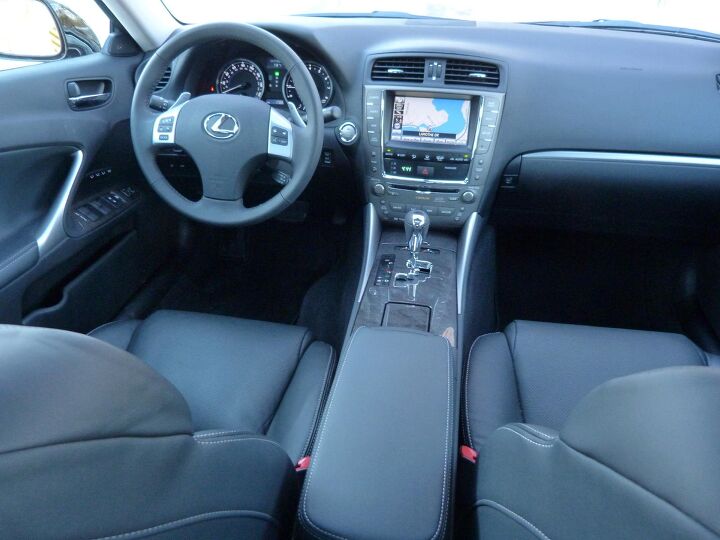























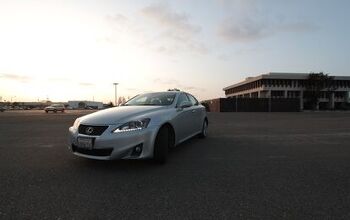
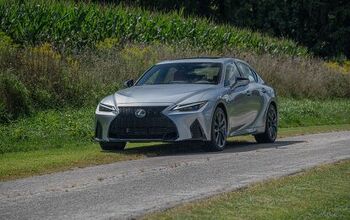
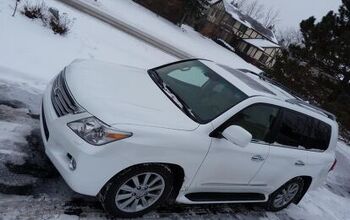
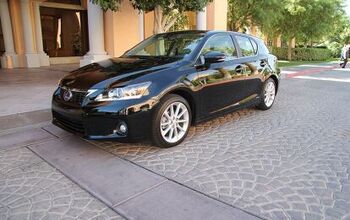




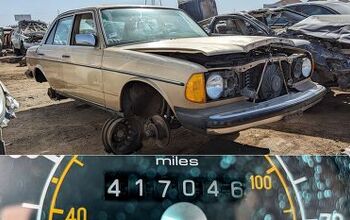






Comments
Join the conversation
Hm...if I wanted an AWD sedan and usable back seats at this price range, I'd probably get an A4. There's literally no legroom in the back on an IS, I've sat in one (6'0"). The interior/exterior are comparable (sporty and conservative) but the A4 has much better fuel economy and rear leg room.
Drove the IS250 AWD a couple times and found it too tight in front, with insufficient legroom in back. RWD was a non-option for me. Essentially I could not recommend the 250 with the tiny six over a TSX, which had a nicer engine with the same power rating, more room, at a much lower sticker. The IS didn't even have memory seats, which was odd. Ultimately, a used 328xi served my purposes better. The 230 HP six provides exactly the bump needed over the 200 or so in the IS250 and TSX and the interior space was much improved. The IS350 AWD solves the power problem, but not the space issue, and at a premium over a 328xi or G37x it would be hard to recommend to anyone who didn't just love it. I find it odd that Lexus hasn't looked at employing a six closer to the 230HP in the 328, rather than just adding AWD to the IS350, which is overpowered for the average driver. Infiniti figured this out with the G25.